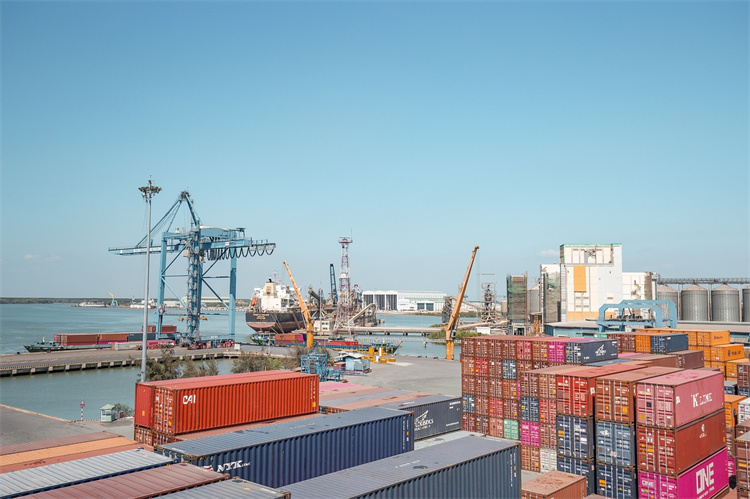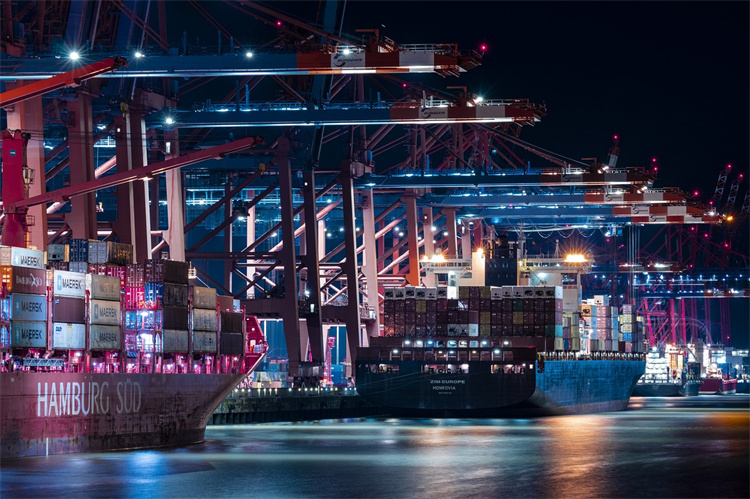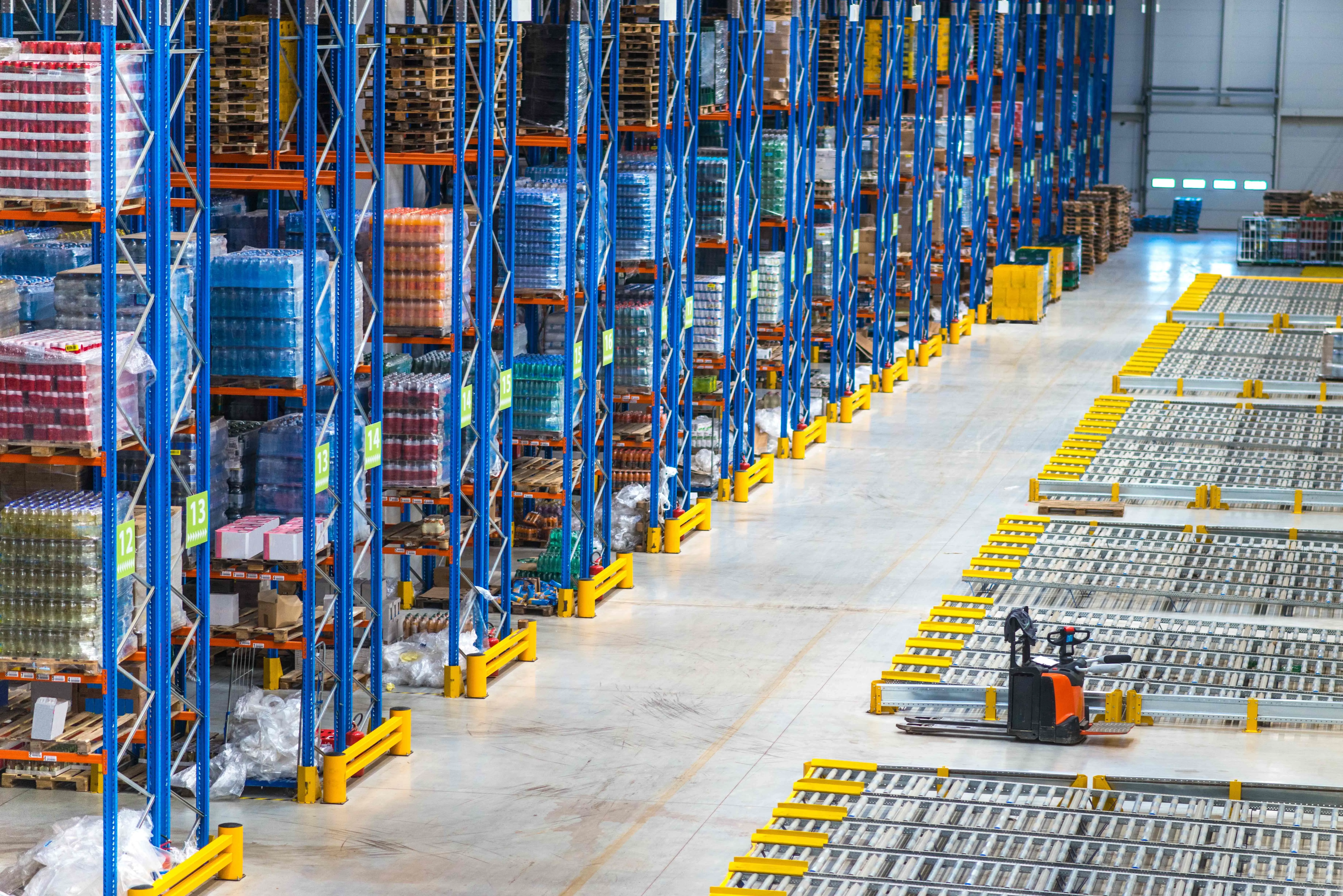Understanding the Pros and Cons of Air vs Ocean Freight

Choosing between air freight vs ocean freight involves several critical factors. You must consider cost, speed, capacity, environmental impact, and reliability. Air freight offers faster delivery but comes at a higher price due to operational costs like fuel and airport fees. In contrast, ocean freight is more cost-effective for large shipments and generates a smaller carbon footprint. Understanding these differences between air freight and ocean freight helps you make informed decisions that align with your business needs and sustainability goals.
Key Takeaways
Air freight is the fastest shipping option, ideal for urgent deliveries, but comes with higher costs due to fuel and airport fees.
Ocean freight is more economical for large shipments, offering lower costs per unit and a smaller carbon footprint, making it suitable for bulk transport.
Consider the urgency of your shipment: choose air freight for time-sensitive goods and ocean freight for non-urgent, large volume shipments.
Evaluate the environmental impact: ocean freight is generally more sustainable, with lower emissions compared to air freight.
Understand the capacity limitations of each mode: air freight is best for smaller, high-value items, while ocean freight can handle oversized and bulk cargo.
Utilize the China-Europe Express Rail as a balanced alternative, providing faster delivery than ocean freight at a lower cost than air freight.
Align your logistics strategy with your business needs by considering cost, speed, capacity, and environmental impact to optimize efficiency.
Cost Comparison in Air Freight vs Ocean Freight
When deciding between air freight and ocean freight, understanding the cost implications is crucial. Each mode of transport has unique factors that influence its pricing structure.
Air Freight Costs
Air freight is known for its speed, but this comes at a price. Several elements contribute to the overall cost of air freight:
Factors affecting air freight costs
Fuel Costs: Airplanes consume a significant amount of fuel, which directly impacts shipping costs. Fuel prices fluctuate, affecting the overall expense of air freight.
Airport Fees: Airports charge fees for handling cargo, which adds to the cost. These fees cover services like loading, unloading, and storage.
Handling Charges: Specialized handling is often required for air freight, especially for delicate or high-value items. This increases the cost compared to other modes of transport.
Limited Capacity: Airplanes have limited space for cargo, making it more expensive to ship large or bulky items.
Typical cost scenarios for air freight
Air freight is typically more expensive than ocean freight. For instance, shipping a small, lightweight package via air might be cost-effective due to its speed. However, larger shipments can become prohibitively expensive. Businesses often choose air freight for urgent deliveries or high-value goods where time is a critical factor.
Ocean Freight Costs
Ocean freight offers a more economical option, especially for large shipments. Here's what affects the cost of ocean freight:
Factors affecting ocean freight costs
Economies of Scale: Ships can carry vast amounts of cargo, reducing the cost per unit. This makes ocean freight more cost-effective for bulk shipments.
Fuel Efficiency: Ships are more fuel-efficient than airplanes, leading to lower fuel costs per ton of cargo transported.
Port Fees: While ports also charge fees, they are generally lower than airport fees, contributing to the overall affordability of ocean freight.
Longer Transit Times: The slower speed of ocean freight allows for more predictable scheduling, which can reduce costs associated with delays.
Typical cost scenarios for ocean freight
Ocean freight is ideal for large, non-urgent shipments. For example, transporting heavy machinery or bulk commodities by sea is often more economical than by air. The lower cost per unit makes ocean freight attractive for businesses looking to minimize expenses on large-scale shipments.
Speed and Delivery Time: Air Freight vs Ocean Freight

When considering the speed and delivery time of air freight vs ocean freight, you must evaluate your shipment's urgency. Each mode offers distinct advantages based on your specific needs.
Air Freight Speed
Air freight stands out for its rapid delivery times. You can expect your goods to reach their destination swiftly, often within a few days.
Average delivery times for air freight
Domestic Flights: Typically, air freight can deliver within 24 to 48 hours domestically. This quick turnaround is ideal for urgent shipments.
International Flights: For international deliveries, air freight usually takes between 1 to 5 days, depending on the distance and customs processes involved.
Situations where air freight is advantageous
Air freight becomes particularly beneficial in several scenarios:
Time-Sensitive Shipments: If you need to transport perishable goods or high-value items quickly, air freight is your best option.
Reduced Inventory Costs: By choosing air freight, you can maintain lower inventory levels, as goods arrive faster, reducing storage costs.
Lower Insurance Premiums: The shorter transit time often results in lower insurance costs, as the risk of damage or loss decreases.
Ocean Freight Speed
Ocean freight, while slower, offers a reliable option for non-urgent shipments. You can plan your logistics around its longer transit times.
Average delivery times for ocean freight
Short Sea Routes: For shorter routes, such as within the same continent, ocean freight might take 1 to 3 weeks.
Long-Distance Routes: Transcontinental shipments can range from 3 to 6 weeks, depending on the route and weather conditions.
Situations where ocean freight is advantageous
Ocean freight proves advantageous in these situations:
Large Volume Shipments: When transporting large quantities of goods, ocean freight provides a cost-effective solution due to its capacity for bulk shipments.
Less Time-Sensitive Goods: If your products are not time-sensitive, ocean freight allows for more economical shipping without the urgency of air freight.
Environmental Considerations: Ocean freight has a smaller carbon footprint compared to air freight, making it a more sustainable choice for environmentally conscious businesses.
By understanding the differences in speed and delivery time between air freight and ocean freight, you can make informed decisions that align with your business priorities.
Capacity and Volume: JUSDA's Role
When considering the capacity and volume of air freight vs ocean freight, you must evaluate the specific needs of your shipment. Each mode of transport offers distinct advantages based on the type and size of cargo.
Air Freight Capacity
Air freight provides a swift and efficient solution for transporting goods, but it comes with certain limitations.
Limitations on size and weight
Cargo Space: Airplanes have limited cargo space, which restricts the size and weight of shipments. This makes air freight less suitable for very large or heavy items.
Weight Restrictions: Airlines impose strict weight limits to ensure safety and efficiency. Exceeding these limits can result in additional charges or the need to split shipments.
Volume Constraints: The design of aircraft cargo holds limits the volume of goods that can be transported in a single flight.
Ideal cargo types for air freight
Air freight excels in transporting specific types of cargo:
Perishable Goods: Items like fresh produce and pharmaceuticals benefit from the speed of air transport, ensuring they reach their destination quickly and remain in optimal condition.
High-Value Items: Electronics and luxury goods often require the security and rapid delivery that air freight provides.
Urgent Shipments: When time is of the essence, air freight offers the fastest option for delivering goods across long distances.
Ocean Freight Capacity
Ocean freight stands out for its ability to handle large volumes of cargo, making it a preferred choice for many businesses.
Advantages in handling large volumes
Vast Capacity: Ships can carry massive quantities of goods, making ocean freight ideal for bulk shipments. This capacity allows for the transportation of large items like machinery and vehicles.
Economies of Scale: The ability to transport large volumes reduces the cost per unit, offering a cost-effective solution for businesses.
Flexibility in Cargo Types: Ocean freight accommodates a wide range of goods, from raw materials to finished products.
Ideal cargo types for ocean freight
Ocean freight is particularly advantageous for certain types of cargo:
Bulk Commodities: Items such as grains, coal, and ores are well-suited for sea transport due to the large quantities involved.
Non-Urgent Goods: Products that do not require immediate delivery can benefit from the cost savings of ocean freight.
Oversized Cargo: Large machinery and equipment that exceed the size limits of air freight can be efficiently transported by sea.
Understanding the capacity and volume capabilities of air freight vs ocean freight helps you choose the most suitable method for your shipping needs. By aligning your cargo type with the appropriate transport mode, you can optimize efficiency and cost-effectiveness.
Environmental Impact of Air Freight vs Ocean Freight

When you consider the environmental impact of air freight vs ocean freight, it's essential to understand how each mode affects our planet. Both have distinct carbon footprints and initiatives aimed at reducing their environmental impact.
Air Freight Environmental Considerations
Air freight, known for its speed, comes with a significant environmental cost. The carbon emissions from air transport contribute notably to global pollution.
Carbon footprint of air freight
High Emissions: Air freight generates a substantial carbon footprint. According to the International Council on Clean Transportation (ICCT), the air transport sector was responsible for 9% of global transport CO2 emissions in 2020. This high level of emissions makes air freight less sustainable compared to other modes of transport.
Fuel Consumption: Airplanes consume large amounts of fuel, leading to increased carbon emissions per ton-kilometer transported. This consumption contributes to the overall environmental impact of air freight.
Initiatives to reduce environmental impact
Fuel Efficiency Improvements: Airlines are investing in more fuel-efficient aircraft to reduce emissions. These advancements aim to lower the carbon footprint of air freight over time.
Alternative Fuels: The industry is exploring alternative fuels, such as biofuels, to decrease reliance on fossil fuels. This shift could significantly reduce the environmental impact of air freight.
Carbon Offsetting Programs: Many airlines offer carbon offsetting programs. These initiatives allow you to compensate for emissions by investing in environmental projects, such as reforestation.
Ocean Freight Environmental Considerations
Ocean freight, while slower, presents a more environmentally friendly option. Its lower carbon footprint makes it a preferred choice for eco-conscious businesses.
Carbon footprint of ocean freight
Lower Emissions: Ocean freight has a smaller carbon footprint compared to air freight. Ships are more fuel-efficient, resulting in fewer emissions per ton-kilometer transported. This efficiency makes ocean freight a more sustainable option.
Bulk Transport Advantage: The ability to transport large volumes of goods in a single journey further reduces the carbon footprint. This advantage makes ocean freight ideal for businesses looking to minimize their environmental impact.
Initiatives to reduce environmental impact
Cleaner Fuels: Shipping companies are adopting cleaner fuels, such as liquefied natural gas (LNG), to reduce emissions. This transition helps lower the environmental impact of ocean freight.
Energy-Efficient Technologies: Innovations like energy-efficient engines and hull designs are being implemented. These technologies aim to enhance fuel efficiency and reduce emissions.
Sustainable Practices: Many shipping companies are adopting sustainable practices, such as slow steaming, which involves reducing speed to save fuel and cut emissions.
By understanding the environmental impact of air freight vs ocean freight, you can make informed decisions that align with your sustainability goals. Choosing the right mode of transport can significantly influence your carbon footprint and contribute to a greener future.
Reliability and Risk: Insights from JUSDA
When you choose between air freight and ocean freight, understanding reliability and risk is crucial. Each mode of transport has unique factors that affect its dependability and potential risks.
Air Freight Reliability
Air freight offers a high level of reliability, but several factors can influence its consistency.
Factors affecting reliability in air freight
Weather Conditions: Weather plays a significant role in air freight reliability. Severe weather can lead to flight delays or cancellations, impacting delivery schedules.
Airport Congestion: Busy airports may experience congestion, causing delays in cargo handling and processing. This can affect the timely delivery of goods.
Security Measures: Strict security protocols at airports can sometimes slow down the movement of cargo. These measures ensure safety but may impact delivery times.
Common risks and how they are managed
Damage to Goods: Air freight involves handling goods multiple times, increasing the risk of damage. You can mitigate this by using proper packaging and working with experienced freight handlers.
Lost Shipments: Although rare, shipments can get lost during transit. Tracking systems and insurance coverage help manage this risk, ensuring you can locate and recover lost items.
Customs Delays: International shipments may face customs delays. Proper documentation and compliance with regulations minimize this risk, ensuring smoother customs clearance.
Ocean Freight Reliability
Ocean freight provides a reliable option for transporting goods, but it also faces specific challenges.
Factors affecting reliability in ocean freight
Port Congestion: Ports can become congested, leading to delays in loading and unloading cargo. Efficient port operations and scheduling help reduce this issue.
Weather Impact: While less affected by weather than air freight, severe storms can still disrupt ocean freight schedules. Planning and monitoring weather patterns help manage this risk.
Vessel Availability: The availability of vessels can impact ocean freight reliability. Booking in advance and working with reputable carriers ensure timely shipping.
Common risks and how they are managed
Cargo Damage: Ocean freight involves long transit times, increasing the risk of damage. Proper packaging and securing of goods help prevent this.
Piracy and Theft: Although rare, piracy and theft can occur. Shipping companies implement security measures and use secure routes to mitigate this risk.
Regulatory Compliance: Non-compliance with international shipping regulations can lead to delays. Ensuring all documentation is accurate and up-to-date helps avoid this issue.
By understanding the reliability and risks associated with air freight vs ocean freight, you can make informed decisions that align with your business needs. JUSDA provides insights and solutions to help you navigate these challenges effectively.
China-Europe Express Rail: A Balanced Alternative
When you consider the logistics of transporting goods between China and Europe, the China-Europe Express Rail emerges as a compelling option. It offers a balance between speed and cost, making it an attractive alternative to traditional air and ocean freight.
Speed and Cost Efficiency
The China-Europe Express Rail provides a unique blend of speed and affordability. This service is faster than ocean freight and more cost-effective than air freight. Here’s how it stands out:
Faster Delivery: Rail freight can deliver goods 22–25 days faster than ocean freight. This speed advantage makes it suitable for businesses that need quicker delivery without the high costs of air freight.
Cost-Effective Solution: Rail freight is up to 30% cheaper than air freight for the same journey. This cost efficiency allows you to optimize your logistics budget while maintaining a reasonable delivery timeline.
Balanced Approach: By choosing rail freight, you achieve a middle ground between the high speed of air freight and the low cost of ocean freight. This balance makes it a viable option for many businesses looking to streamline their supply chain.
Ideal Cargo Types and Industries
The China-Europe Express Rail is particularly well-suited for specific types of cargo and industries. Understanding these can help you determine if this mode of transport aligns with your business needs:
Electronic Products: The rail service efficiently handles electronic goods, providing a secure and timely delivery option for high-value items.
Clothing and Textiles: Fashion and textile industries benefit from the rail's speed, ensuring that seasonal products reach markets promptly.
Medical Supplies: The rail's reliability and speed make it ideal for transporting medical supplies, where timely delivery is crucial.
Automotive Parts: For the automotive industry, the rail service offers a dependable solution for shipping parts and components across continents.
By leveraging the China-Europe Express Rail, you can enhance your logistics strategy with a balanced approach to speed and cost. This service caters to a variety of industries, providing a reliable and efficient alternative to traditional freight options.

JUSDA Solutions
To provide you with professional solutions and quotations.
In summary, choosing between air and ocean freight depends on your business priorities. Air freight offers rapid delivery, making it ideal for time-sensitive shipments like perishable goods and high-value items. However, this speed comes at a higher cost. Ocean freight, on the other hand, provides a more cost-effective solution for large volumes and non-urgent shipments, thanks to its economies of scale. Consider your shipment's urgency, volume, and budget to select the most suitable method. By aligning your logistics strategy with these factors, you can optimize efficiency and meet your business goals effectively.
See Also
Exploring the Future of LTL Freight Solutions
Discovering Innovations in Sea Freight Logistics for 2024
Understanding Current Trends in Logistics Risk Management
